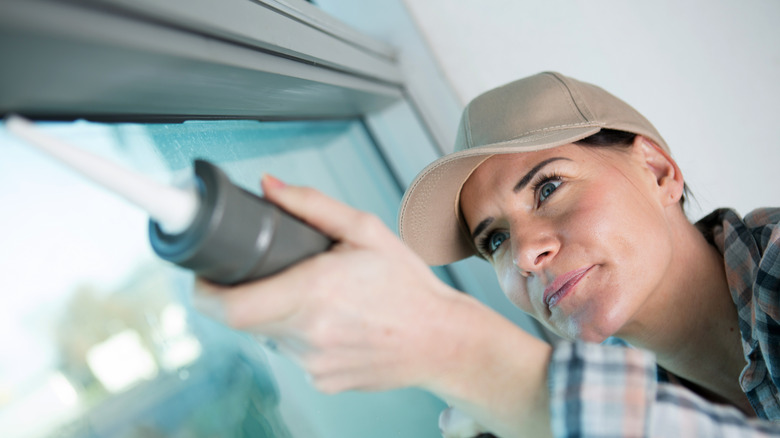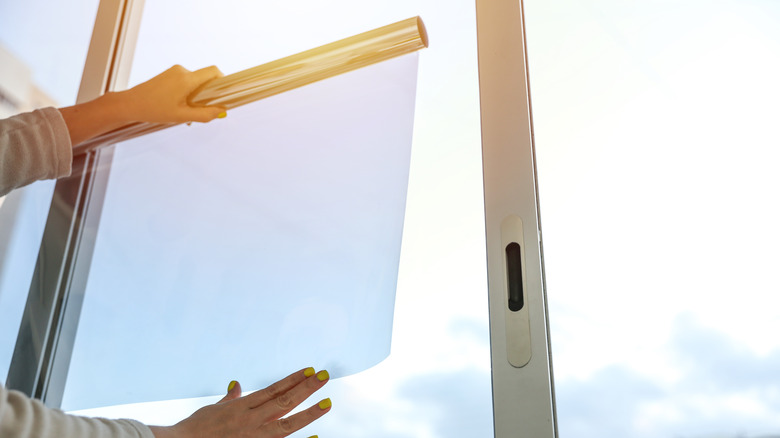How To Best Insulate Windows
When temperatures cool down, the first thing we do is bundle up. However, if you find yourself adding layers while indoors, you may have an issue with cold air seeping in. The first place to check is your windows. Over time, windows can lose their efficiency due to season temperature fluctuations or the natural settling of your home. If your windows are several decades old, they also may not meet current industry standards for energy efficiency. Energy Star breaks down the criteria they consider when issuing quality performance ratings. They look at a variety of factors, including insulation or U-factor, solar blocking, and air leakage through any joints. Thankfully, there are a variety of methods you can employ to make up for a poor energy star rating or otherwise improve your window insulation.
Cool air loss is also an issue during the warmer months. If the cold air your HVAC unit is producing is escaping from your home, your system is forced to work overtime, which can cause drastic increases in your energy bills. According to the U.S. Department of Energy, over a quarter of residential energy consumption can be attributed to inefficient windows. To save money and have a home that is comfortable year-round, addressing these inefficiencies should be a priority. Check out these methods to insulate your windows and make your home a more comfortable space.
Seal up gaps
One way to improve your window's insulation is to use caulk to fill any gaps where air might be coming through. This is a common DIY project that most homeowners can handle, but it's important to follow proper steps to ensure proper function and a professional-looking execution. As Bob Vila explains, it is also important to use the correct type of caulk for each application– caulk for outdoor areas is weatherproof to protect against the elements but is too harsh to be used indoors, where you should use much safer indoor-specific caulk instead.
After the caulk you applied has fully set, you can also apply weatherstripping to the window to the window sash for additional insulation. According to This Old House, it is available in a variety of materials to suit your needs and preference, but all are relatively inexpensive, easy to install, and effective in improving the insulation of your home.
For larger gaps in your windows that caulk or weatherstripping can't effectively correct, you may need to use spray foam insulation instead. As the Spray Foam Coalition explains, it instantly fills holes to block air from flowing in or escaping out. In addition, using spray foam insulation on your windows and other areas of your home can save you money on energy bills in the short term, and reduce the burden on your HVAC system in the long run as well.
Apply window insulation film
Another way to quickly improve your home's energy efficiency is to apply window insulation film. While it won't be effective in sealing gaps, it works to improve the energy efficiency of your home in other ways. It is also relatively affordable, especially when compared to the cost of replacing your windows altogether. According to Home Reference, the two main types of window insulation film are convection control film and solar control film. Convection control film is applied to the window frame to create a gap between the film and the window pane, hindering the rate of temperature fluctuations. Solar control film is applied directly to the glass and works by deflecting and absorbing the sun's rays to keep them from passively heating your home.
Though solutions like window film can help improve the efficiency of your home, at a certain point you should consider whether it's time to replace your windows. According to Clera Windows + Doors, high-quality windows should last around two decades, after which you should expect to have to make repairs. If your windows are over 20 years old, however, and repairs are frequent, it may be time to start saving up for replacements. Signs you need new windows include gaps between the jamb and the frame, difficulty when opening or closing, condensation within multi-pane windows, and increases in your home energy bills. All of these issues point to faulty windows, in which case you should contact a professional for a consultation.


